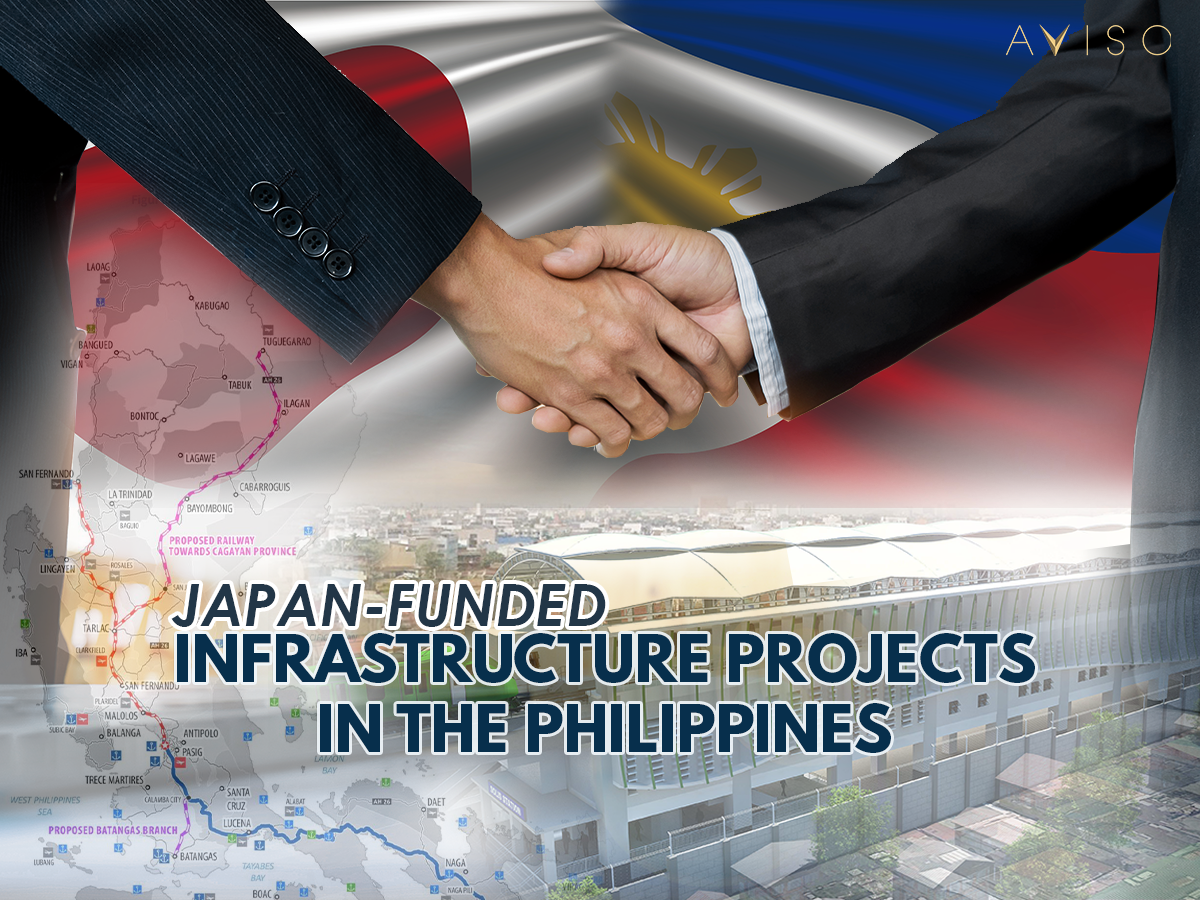
According to the government’s Investor Relations Office (IRO), Japan remains the Philippines’ top source of official development assistance (ODA) and major infrastructure development partner, with a total of $11.2 billion in low-interest loans and grants as of the third quarter of 2020, of which $9.9 billion or 89.1 percent went to infrastructure projects.
Here are some of the big-ticket projects under the “Build, Build, Build” program that involve financial aids from Japan that will enhance connectivity, attract investments, and create jobs in the country.
1. Metro Manila Subway Project
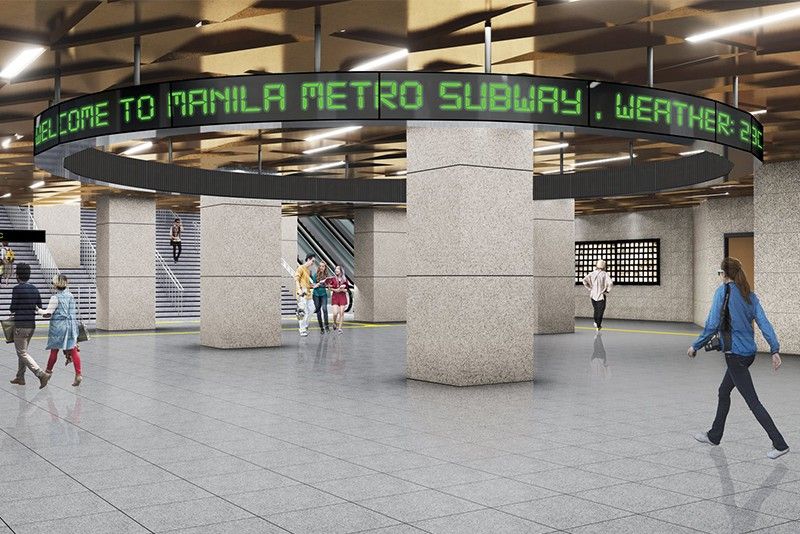
Photo from DOTr
Total project cost: Php 357 billion
Capacity: 370,000 passengers daily
Construction timeline: Partial operations by the 2nd quarter of 2022, mainline completion by the 3rd quarter of 2025
The Metro Manila subway will span 36 kilometers and is expected to have 17 stations. The subway project’s stations include Quirino Highway, Tandang Sora, North Avenue, Quezon Avenue, East Avenue, Anonas, Katipunan, Ortigas (previously called Ortigas North), Shaw (previously called Ortigas South), Kalayaan Avenue, Bonifacio Global City, FTI, East Valenzuela, Lawton, Senate, Ninoy Aquino International Airport Terminal 3 and Bicutan. According to the DOTr, the Metro Manila Subway will use Japanese technology to make the structure flood and earthquake-proof.
Three stations under Phase 1 are expected to be operational by 2022: Mindanao Avenue-Quirino Highway, Tandang Sora, and North Avenue.
By 2025, 15 stations will be operational, connecting Quirino Highway to NAIA Terminal 3 and reducing travel time to half an hour with trains running up at speeds of up to 80 km/h. Once fully operational, travel time from Quezon City to NAIA will be reduced from nearly two hours to about 40 minutes.
2. North-South Commuter Railway System (NSCR)
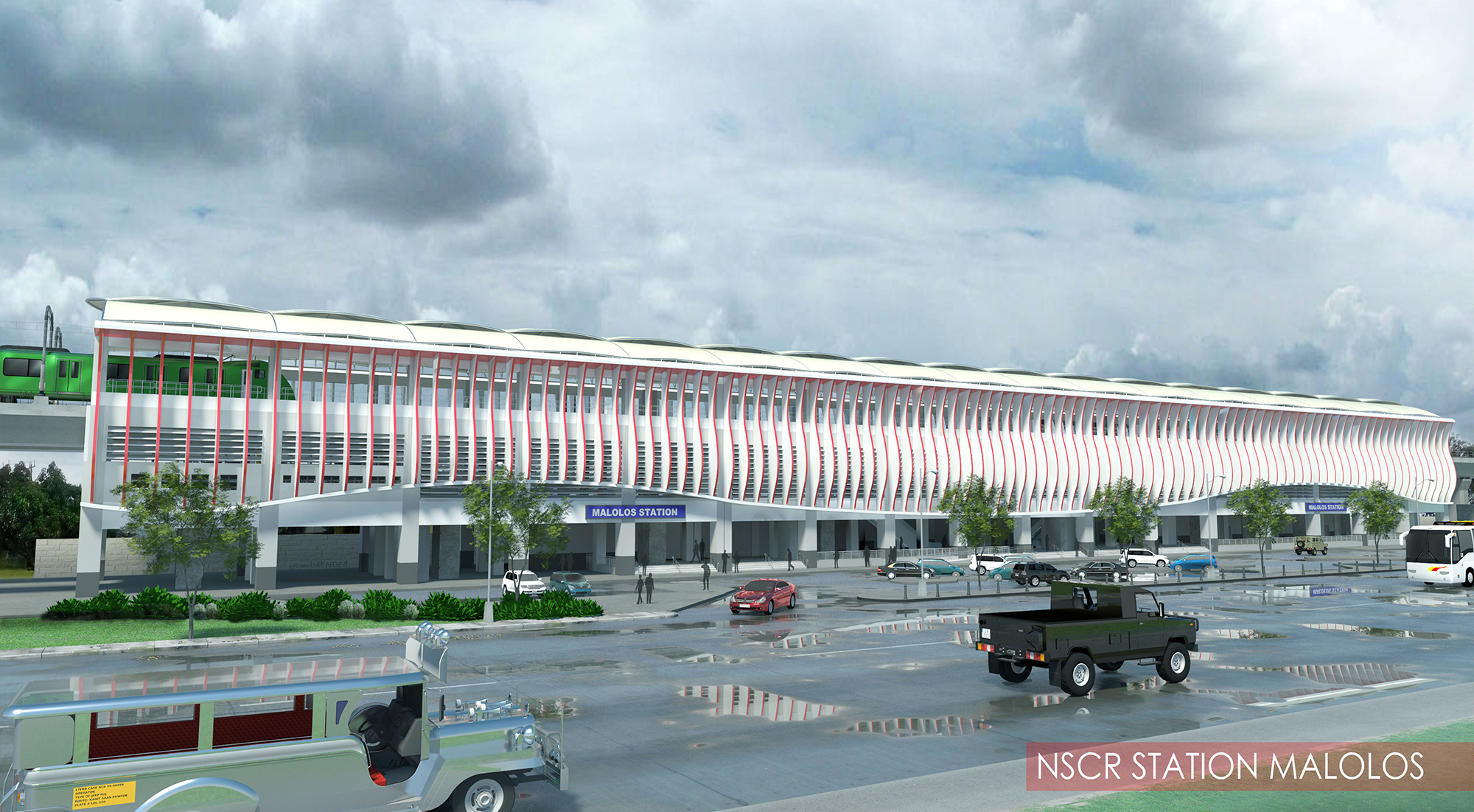
An artists perspective of NSCR Malolos Station / DOTr
Total project cost: P777.55 billion
Capacity: 350,000 passengers daily
Construction timeline: Partial operations by 2021, full operations by 2024
The project is composed of three stages:
Clark Phase 1: a 38km line from Tutuban Manila to Malolos Bulacan (45.82% complete as of May 2021)
Clark Phase 2: a 53km line from Malolos to Clark, Pampanga, and (27.79% complete as of March 2021)
Calamba: a 56km line from Manila to Calamba, Laguna.
Calumpit, Apalit, San Fernando, Angeles, Clark, and Clark Airport were among the six stations in Clark Phase 2. Partial operation on Clark Phase 2 is expected to begin in 2022, and the line is expected to cut travel time between the two cities from 1hr 30mins to 30-35 mins. In its first year, the line is expected to carry up to 340,000 passengers daily and will be the country’s first airport express route.
It is expected to shorten travel time from North Avenue to Ninoy Aquino International Airport (NAIA) Terminal 3 to 45 minutes. The railway will also link the Light Rail Transit (LRT) lines 1 and 2, the Metro Rail Transit (MRT) line 3, and the forthcoming Metro Manila Subway.
3. Metro Rail Transit Line 3 (MRT-3) Rehabilitation Project

Image from ABS-CBN News
Total project cost: Php 18 billion
Capacity: 650,000 passengers daily
Construction timeline: Completion by December 2021
The rehabilitation project includes the restoration of assets such as light rail vehicles, tracks, signaling system, overhead catenary system (OCS), communications system, depot and station equipment.
The rail replacement works were completed in December 2020, several months ahead of the scheduled completion. After the repairs, it began running twice as fast at 60 km/h, reducing the average waiting time from 8 to 9.5 minutes to 3.5 to 4 minutes.
According to DOTr, the MRT-3 rehabilitation project has “significantly increased” the number of operational trains from 10 to 15 running trains in May 2019 to 23 running trains in January 2021. The DOTr also claims that the travel time from North Avenue Station to Taft Station, the end-to-end rail terminals, has been reduced from at least 1 hour and 15 minutes to around 45 minutes.
Aside from these, the DOTr mentioned that the signalling system installation is 78.3 percent completed, while 46 escalator units and 34 stations are already operational.
4. LRT1 Cavite Extension
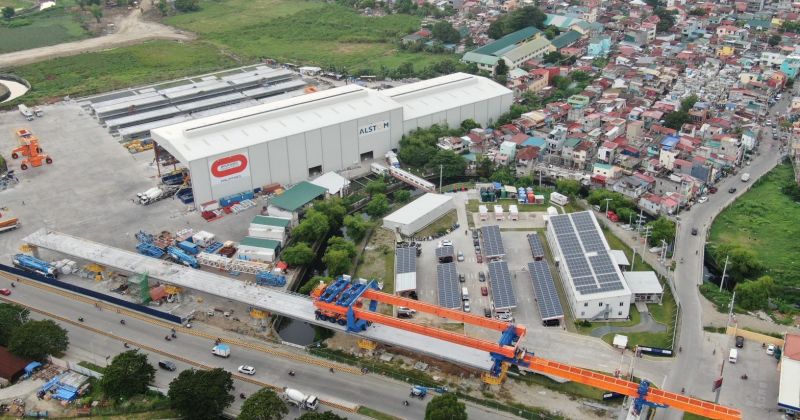
Image from Light Rail Manila Corporation
Total project cost: Php 64.9 billion
Capacity: 500,000 to 800,000 passengers daily
Construction timeline: 57.88% complete as of February 28, 2021, target completion by 2022
The current LRT Line 1 will be extended starting from its existing Baclaran Station to the future Niyog Station in Bacoor, Cavite spanning approximately 11.7 kilometers. Of this segment, 10.5 kilometers will be elevated and 1.2 kilometers will be at-grade. With this extension, the whole stretch of the integrated LRT 1 will have a total length of approximately 32.4 kilometers.
Phase one of the project includes five stations — Redemptorist, MIA, Asia World, Ninoy Aquino, and Dr. Santos — out of the total eight stations. The other three stations are Las Piñas, Zapote and Niog.
Once its full commercial operations begin in 2022, the extension will boost the current 500,000-passenger capacity of the LRT-1 to 800,000 per day, and cut travel time between Baclaran and Bacoor, Cavite from the current one to two hours to only 25 minutes.
5. Central Luzon Link Expressway

Photo from DPWH
Total project cost: Php 12.61 Billion
Capacity: 11,200 motorists and commuters daily
Construction Timeline: Completed and began operations on May 15, 2021
The CLLEX project is a 30-kilometer, four-lane expressway that connects the SCTEX (Subic-Clark-Tarlac Expressway) and TPLEX (Tarlac-Pangasinan-La Union Expressway) in Balincanaway, Tarlac City, and ends at Daang Maharlika in Brgy. Caalibangbangan, Cabanatuan City.
According to DPWH Secretary Mark Villar, the P14.94 billion flagship infrastructure project is intended to facilitate the movement of goods and services from SCTEX/TPLEX to the eastern part of Luzon towards Cagayan Valley, bypassing some town centers in Bulacan and Nueva Ecija, and will reduce travel time between Tarlac City and Cabanatuan City from 70 minutes to 20 minutes.
CLLEX would serve at least 11,200 motorists and commuters per day, reducing traffic on the Daang Maharlika Highway by approximately 48 percent, he added.
6. Davao City Bypass construction project
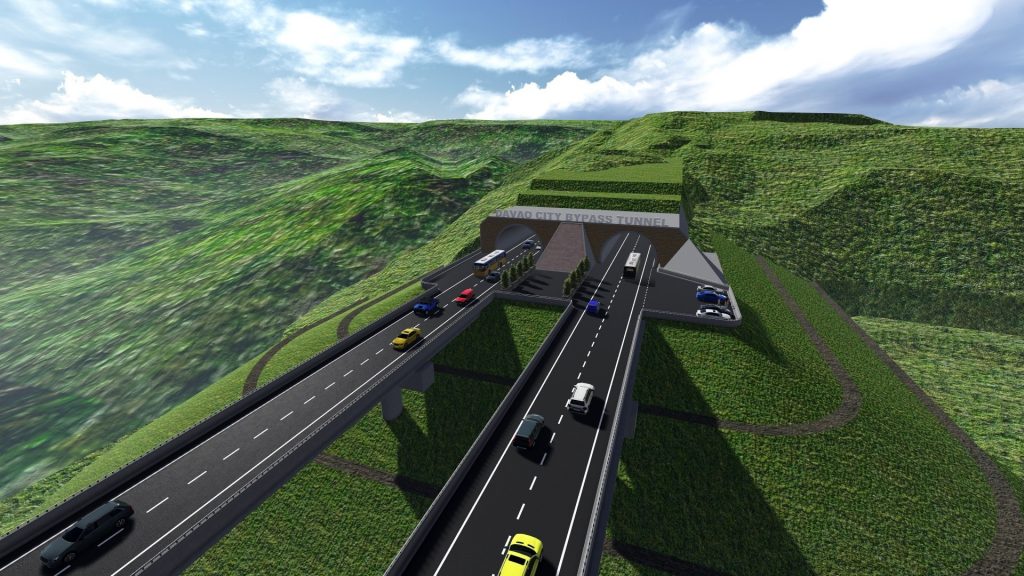
Rendered design of Davao City Bypass Project / JICA
Total Project Cost: Estimated Php 29.81 Billion (Php 18.5 billion financed by Japan)
Construction Timeline: Target completion by 2025
The entire Davao City bypass road project has a total length of 45.5 kilometers and is divided into six (6) packages: package I-1 (10.7 km), package I-2 (12.8 km), package I-3 (6.1 km), package II-1 (2.7 km), package II-2 (3.5 km), and package II-3 (9.7 km).
The project includes the construction of a 2.3-kilometer tunnel that will run through the mountainous barangays to shorten the drive from the Davao-Digos Intersection of Pan-Philippine Highway in Toril towards the intersection of the Davao-Agusan National Highway in Panabo City.
According to DPWH Secretary Mark Villar, the construction of a bypass road will be a driving force for economic growth throughout Mindanao by connecting the port area to the southern end of Davao City while avoiding the city center. Travel time between the cities will be reduced to 49 minutes.
7. Metro Manila Priority Bridges for Seismic Improvement Project
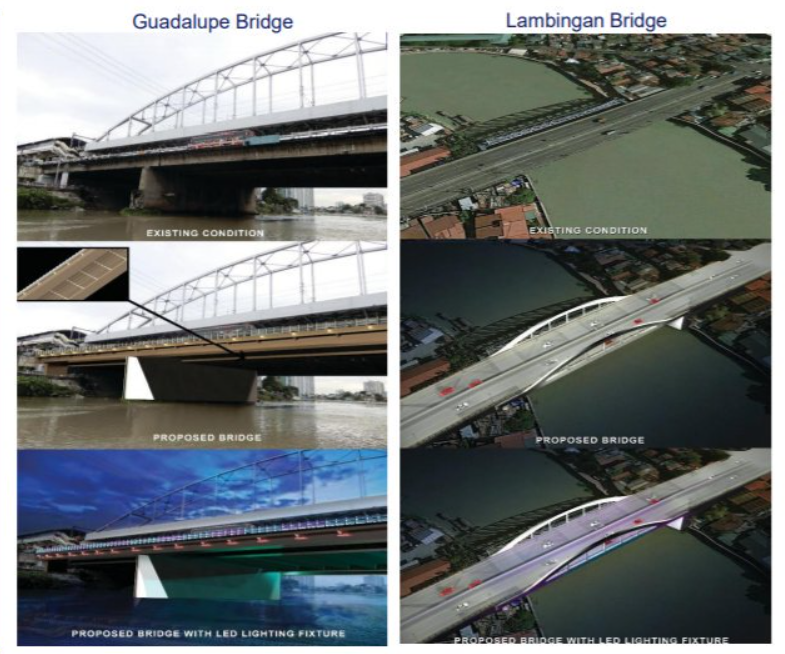
Total Project Cost: Php 7.93 billion
Construction Timeline: May 2023 Target completion
The project involves the replacement of the Lambingan Bridge and Guadalupe Bridge to strengthen the resilience of said infrastructure facilities from large-scale earthquakes.
It includes Replacement of substructure with Reinforced Concrete (RC) abutments on 2.5m cast-in-place bored piles; Replacement of superstructure with 1-span 90m Steel Deck Lohse Arch Stiffening Box Girder; Improvement of approach road and intersections for Lambingan Bridge.
While the improvements for Guadalupe Bridge include Replacement of piers with RC piers on steel pipe sheet pile foundation (SPSP) and RC abutments on 2.5m cast-in-place bored piles; Replacement of superstructure with 125m, 3-span Steel Deck Box Girder; Improvement of the approach road, and others.
8. Cebu-Mactan Bridge (4th Bridge) and Coastal Road Construction Project
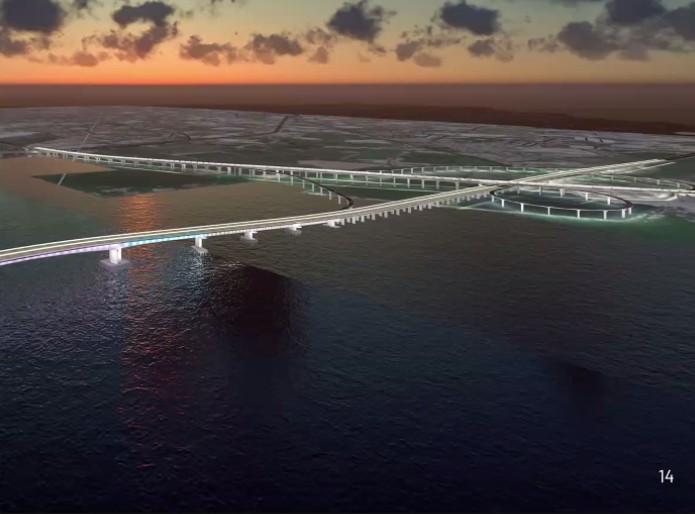
Photo from DPWH
Total Project Cost: Php 76.41 billion (Php 57 billion funded by Japan)
Construction Timeline: Target completion by 2028
The 4th Cebu-Mactan Bridge is composed of two components – the bridge itself spanning up to 3.3 kilometers and the Mandaue Coastal Road that has a length of 4.9 kilometers, with two to three lanes in each direction.
The project aims to improve transport capacity and efficiency by constructing a road bridge connecting Mandaue City of Cebu Island and Lapu Lapu City of Mactan Island and connecting roads, thereby contributing to alleviate serious traffic congestion as well as improving local economic development.
9. Cavite Industrial Area Flood Management Project

Total Project Cost: Php 9.89 Billion
Construction Timeline: April 2020 – October 2024
The project involves mitigating flood damages caused by the San Juan River overflow and the Maalimango Creek’s poor drainage system through the construction of a 2.5km San Juan River diversion channel, widening/improvement of the existing Maalimango Creek, and the construction of a Maalimango diversion channel.
Once completed, approximately 7,000 houses on 556 hectares of land will be protected from flooding. It is expected to improve the residents’ living environment and quality of life by mitigating flood/inundation damages in the lower reach of the San Juan River Basin and its adjacent Maalimango Creek Drainage Area in Cavite province. It is also seen to create a more dynamic economy by providing a flood-free economic zone.
We at Aviso Valuation & Advisory, are honored to be involved in some of these projects and worked closely with JICA and other Japanese firms to conduct Transport-Oriented Development (TOD) financial feasibility studies, Comprehensive Property Market Analysis, and Real Property Market Survey.
Written By: Mary Grace Ladringan
Aviso Valuation and Advisory Corp. is a real estate consultancy firm that offers valuation and business advisory services compliant to international standards such as the International Valuation Standards (IVS) and International Financial Reporting Standards (IFRS). To assure that we only produce high-quality deliverables, as needed, we do tasks beyond the usual appraisal process like verifying pertinent property documents (i.e. land titles, tax declarations, etc.) with the appropriate government agencies for due diligence purposes prior to the acquisition of the properties.
_____________________________________________
References:
https://www.smec.com/what-we-do/projects/North-South-Commuter-Rail-Malolos-to-Tutuban
https://www.railway-technology.com/projects/north-south-railway-project/
https://www.pna.gov.ph/articles/1124507
https://www.dpwh.gov.ph/dpwh/news/20937
https://www.dpwh.gov.ph/dpwh/news/20750
https://pia.gov.ph/press-releases/releases/1067161
https://www.gov.ph/es/project-list.html
https://mb.com.ph/2020/10/21/buildbuildbuild-key-road-bridge-projects-to-bring-back-edsas-old-form1/









